Adaptation to the Impacts of Climate Change on Water Resources in the Andes (AICCA), Bolivia
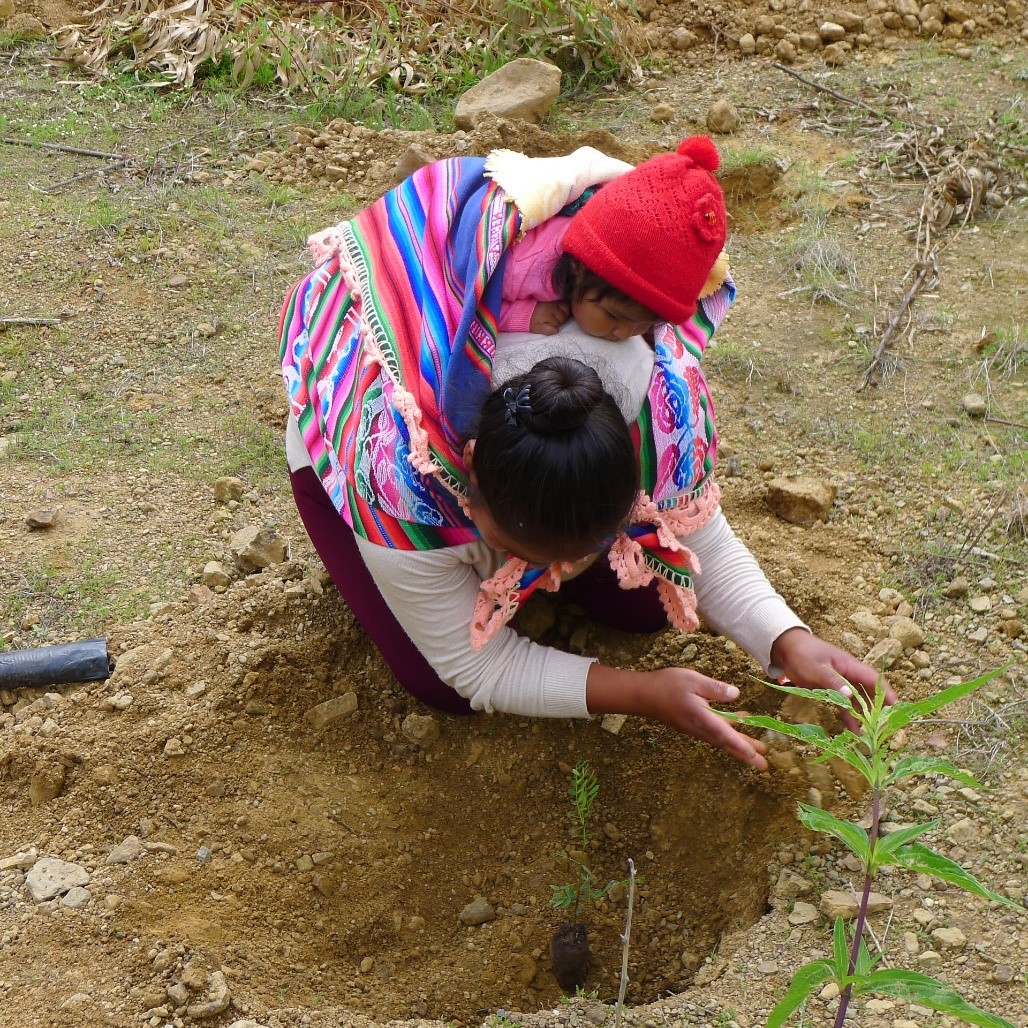
Summary
Photos: AICCA Project Bolivia.
Photos: AICCA Project Bolivia.
Photos: AICCA Project Bolivia.
Photos: AICCA Project Bolivia.
Photos: AICCA Project Bolivia.
This project focuses on the Water and Sanitation subsector in the Department of Cochabamba, Bolivia, with special emphasis on flood control in urban areas and the prevention of loss of key infrastructure. It is part of the regional project “Adaptation to the Impacts of Climate Change on Water Resources in the Andes” (AICCA).
The regional project “Adaptation to the Impacts of Climate Change on Water Resources in the Andes” (AICCA) is a regional initiative aimed at contributing to climate resilience and water security for the sectors of urban pluvial drainage in Bolivia, highland agricultural systems in Colombia, small and medium-scale hydropower in Ecuador, and small-scale irrigation for family farming in Peru.
The project implementation is expected to last 54 months and has the following structure in the four countries:
- Generation and exchange of information and technology transfer.
- Mainstreaming of climate change considerations into policies, strategies and programs.
- Design and implementation of adaptation measures in priority sectors.
- Project management, monitoring and evaluation.
In Bolivia, the project focuses on the Water and Sanitation subsector, with special emphasis on flood control in urban areas and the prevention of loss of key infrastructure. To this end, it proposes to implement climate change adaptation measures in Cochabamba, giving priority to water supply sources and storm drainage, and addressing key issues of vulnerability to climate risks.
The Project considers reforestation as a strategy and action for the preservation and protection of water sources, soil stabilization, and as a contribution to the increase of carbon sinks. Under this framework, inter-institutional coordination has been carried out to perform forestation in the municipalities of the metropolitan region of Cochabamba “Kanata” with the objective of contributing to climate change adaptation, specifically to reduce the risks of hydro-climatic hazards such as floods, landslides, alluviums and droughts. An important characteristic of this initiative is that it seeks to facilitate the sustainability of the actions, which is why coordination is being performed with both national and local institutions. This same modality of work is planned for the whole cycle of forestation, which goes from the strengthening of nurseries, the identification of natural places of regeneration, the care and maintenance of the trees (irrigation, signage and protection structures, if applicable) to finally work on the monitoring and follow-up of the survival of the seedlings, as well as the care of the ecosystem service that is meant to be preserved.
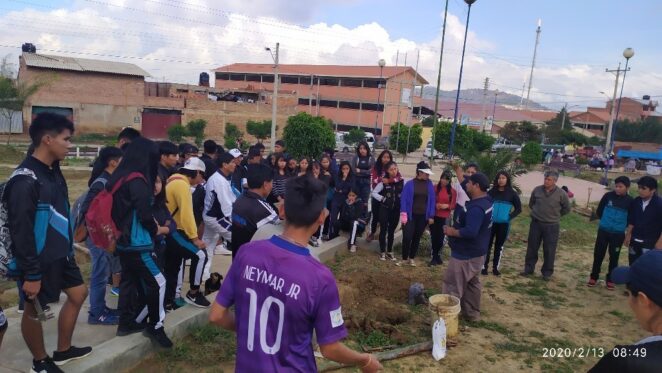
Photos: AICCA Project Bolivia.
Overview
- Location:
- Implementation sites:
-
- Single country
- Multiple locations
- Mountain region:
-
Cochabamba mountain range, Tunari National Park, San Pedro highland, Cochabamba’s central and low valley.
- Province:
-
- Kanata Metropolitan Region of the Department of Cochabamba
- Site locations:
-
Municipalities of Tiquipaya, Sacaba, Quillacollo, Cochabamba, Sipe Sipe and Vinto
- Solution scale:
- Area Covered:
-
- To date, the Project, with the joint effort of other local and national institutions, has planted 71,355 trees in an area of almost 70 [ha].
- Ecosystem type(s):
- Solution type(s):
- Other Solution(s) type(s):
-
- Afforestation and reforestation
- Sector(s):
- Climate impact(s) addressed:
- Other climate impact(s) addressed:
-
- Alluviums
- Climate impact time-scale(s):
- Main benefit associated with the solution:
- Co-benefit(s) associated with the solution implementation:
- Implementation timeline:
-
- 2019
Solution details
Main beneficiaries & outcomes
Peri-urban and urban population of the municipalities of the Kanata Metropolitan Region of Cochabamba, both in the upper and lower parts of the area.
Planning and implementation
The afforestation and reforestation activities were a joint work between the AICCA-Bolivia Project, the project’s focal point (Ministry of Environment and Water), the local partners of the project (Autonomous Departmental Government of Cochabamba and the Autonomous Municipal Government of Sacaba) and other local institutions such as the Armonía Civil Association, the municipalities of the Metropolitan Region, the armed forces, FAUNAGUA, Community Based Territorial Organizations (OTB), Communities, and the Bolivian scouts.
The main activities by institution are detailed below:
- AICCA Project: technical advice, logistical resources to provide food and transportation to participants, tools and seedlings; supplies, coordination with the government and municipality of Sacaba, coordination with OTB and communities through the municipalities and the government; proposal for follow-up and monitoring, protection, maintenance (pruning) and irrigation of saplings, field training to participants.
- Armonía Association: Technical advice, incentives for beneficiaries (e.g. pipes and supplies to improve crop irrigation systems), logistical resources for food and transportation of participants, coordination with communities, OTB and municipality of Tiquipaya; field training for participants; follow-up and monitoring.
- Government: Coordination with communities and OTB, production and provision of seedlings, supplies, field training for participants, technical personnel.
- Soldiers, volunteers, scouts: personnel for planting.
- Tunari National Park-SERNAP: participation and monitoring of plantations.
Finance
The AICCA project is financed by the Global Environment Facility (GEF) with a national counterpart. The project has budgeted approximately US$40,000 for afforestation/reforestation for the 4 years of intervention.
Additionally, partner institutions that are part of the joint work have also provided funding. For example:
- The Armonía Association, through ECOAN Funding, aiming to afforest and restore the native vegetation of Tunari, mainly the Polylepis tree forests.
- The Departmental Government of Cochabamba through the project “Forestation, Reforestation and Integrated Forest Management” has resources from the National Forestry Development Fund FONABOSQUE. The project seeks to promote afforestation and reforestation activities in forests that were affected by wildfires or were degraded.
With the joint initiative, it is also expected to work on other stages such as seedling production, maintenance and monitoring of forested areas.
Innovation
Inter-institutional joint work has been strongly sought with the active participation of local and national actors in forestation. This has been achieved by coupling the different objectives of the partner institutions and other stakeholders, which seek to restore, conserve and improve the environment and local biodiversity that contribute directly to the project’s climate change adaptation objectives. The use of native species has been promoted in forestation campaigns and training and awareness-raising in the field prior to planting.
Another relevant aspect is that the project seeks to contribute to the different stages of the forestation cycle. Thus, the strengthening of local production nurseries, identification of natural areas for the propagation of native species, maintenance and care of seedlings (irrigation, protection structures and signage), as well as the development of a monitoring and follow-up protocol that includes adaptation and restoration indicators, which is expected to be assumed by the project partners and local stakeholders that have participated in this joint initiative.
Performance evaluation
A performance/impact evaluation has not yet been conducted, however a proposal for monitoring and follow-up of the forestations is being worked on, which will include the yield, as well as other indicators on the benefits of these forestations. This will be done through monitoring and follow-up sites in selected areas.
Long term project sustainability and maintenance
In the case of peri-urban and urban tree plantations, irrigation, pruning, signage and tree protections are planned. Also, in rural areas with problems of animal and livestock trespassing, protective structures such as live fences or wire fences will be implemented.
Finally, it is important to mention that the AICCA Project proposes an integral reforestation model in which there is inter-institutional coordination and the active participation of local stakeholders to promote long-term governance of the reforested areas. Through these pilot projects, there has been involvement in the guidelines for the integral management of the reforestations of the municipalities and the Cochabamba government, so that they can replicate the reforestations with a multi-stage and multi-stakeholder model, contributing to their sustainability.
Capacities for design and implementation
Knowledge
It was important to the project to know the technical criteria, such as the location of potential areas to reforest according to soil characteristics and the species to be planted in the place. As well as local characteristics (interests and perception regarding the usefulness of the trees) for the selection of species to reforest, since these not only depend on biophysical variables but also on other aspects such as the knowledge of the potential benefits of these species for the beneficiaries.
Technology
It is important to georeference the sites selected for afforestation to know the access, slope and surrounding vegetation. The Project has used maps to help selecting potential areas for afforestation. Additionally, it is also important to use GIS to monitor and systematize the forested areas.
Political / Legal
For the development, planning and implementation of these activities, the existence of regulations, strategies and projects at both the national and departmental levels that promote afforestation was important. For example, there is the National Forestation and Reforestation Program 2016-2030, which provides departmental guidelines and goals for reforestation for environmental protection, urban forestry, agroforestry – silvopastoral and commercial forestry.
Moreover, there is also FONABOSQUE, a national fund that provides resources to the project “Forestation, reforestation and integrated forest management in the Department of Cochabamba (Formibosque)”. Formibosque aims to increase forest cover by recovering degraded forests and soils, generating economic, social and environmental alternatives, and mitigating the negative effects of climate change in the different regions of the Department of Cochabamba. It works in the following components:
- Strengthening of nursery infrastructure
- Training and socialization
- Production of forestry and agroforestry seedlings
- Afforestation and reforestation
- Plantations supervision
- Management of implanted forests
- Applied research
Furthermore, we also took advantage of the law that created the Tunari Park to promote the afforestation of native species as well as the existence of local regulations for the protection of species such as kewiñas (Polylepis tomentella) and molles (Schinus molle).
Institutional
Collaboration played a very important role. The project has an agreement with the Government of Cochabamba and the Municipality of Sacaba, which enabled us to share economic, logistical and human resources for the planning and implementation of forestation measures. We also worked jointly with the Armonía Association and other local NGOs through a joint agreement.
Coordination with other local institutions was made through strategic partners such as the Government and the Municipality. At the same time, work with other institutions such as the army was carried out through coordination meetings and requests for support made by the government and municipality in coordination with the AICCA Project.
Socio-cultural
The social context is very strong. In the case of aforestation in the Tunari National Park, coordination with the communities and the park administration was crucial. This was due to existing land use conflicts in the park. In addition, although there is a proposed park management plan, it does not have a ministerial resolution that would make its application viable, so coordination with both the park and the communities is necessary.
As previously mentioned, one of the first steps was to consult with the different stakeholders. The project involved the beneficiaries from the beginning, explaining in detail the benefits of reforestation and getting to know their real interest in participating. Stakeholders are an active part of the process of site definition, reforestation development, and follow-up and monitoring strategies.
Outlook & Scalability
Barriers and adverse effects
One of the main problems was that most of the areas of the Tunari National Park are privately owned. A large majority of the park’s territory has individual and communal rights granted by the state to peasant settlers prior to the park’s declaration as a national park. In this sense, incentives had to be provided to landowners in order to make forestation viable. In most of the places where forestation took place, the communal lands are on marginal areas with steep slopes and difficult access.
Another difficulty in the development of this activity was that the farmers preferred to plant exotic species such as pines and eucalyptus because they are a source of energy and income and are also used to establish fences. This activity is currently implemented with or without the knowledge of the park administration. In light of this situation, prior to forestation, information has been provided to people living in the areas to be forested about the benefits of native species for the protection of the site and the ecosystem in general. Likewise, whenever native species have been planted, incentives have been provided in the form of supplies to implement irrigation and fruit tree species.
Finally, another important problem that has greatly affected the planning and implementation of plantations, as well as the production of seedlings has been the COVID pandemic, since the country was under strict quarantine and actions with the population were practically paralyzed. In response to this difficulty, alliances were made with other institutions such as Formibosque, which provided the seedlings, and the military, which provided personnel to implement the plantations.
Transformation and future outlook
This is the first time that an initiative of this magnitude has been implemented in the region, involving the participation of several local and national institutions and organizations, promoting the use of native species for afforestation, and raising awareness of the benefits of trees as a measure for adapting to climate change.
The contribution of the AICCA project is to have been a link between institutions, and to have made visible the integrity of the afforestation and reforestation topic as a measure of adaptation to climate change. In addition, through the complementary actions in the plantations, it is intended to provide the tools and protocols to close the reforestation cycle by implementing the follow-up and monitoring of the plantations.
The characteristics of mountainous areas are similar, and understanding forestation as a way to create more humid environments that help reduce the temperature in urbanized metropolitan areas, makes it a way to face global warming. The project has contributed to a change in the perception of the population and local authorities, who passed from viewing reforestation solely for timber harvesting purposes, to seeing it as integral measure that not only improves the ecosystem services of water regulation, sediment control and soil stabilization, but also benefits the physical and emotional health of the population. There is a lot of expectation from local people to see their rural mountain areas forested again and to have a recreational site to share.
Potential for upscaling and replication
The project is currently working on a strategy for the sustainability of the reforestations with the involvement of more local stakeholders. This year the project plans to strengthen the municipal nurseries, support the development of internships for students from the Forestry School of the Universidad Mayor de San Simón, as well as to promote the development of agroforestry with native species and plantations of fruit trees and agricultural crops, and encourage the exchange of experiences between communities interested in agroforestry.
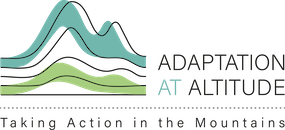
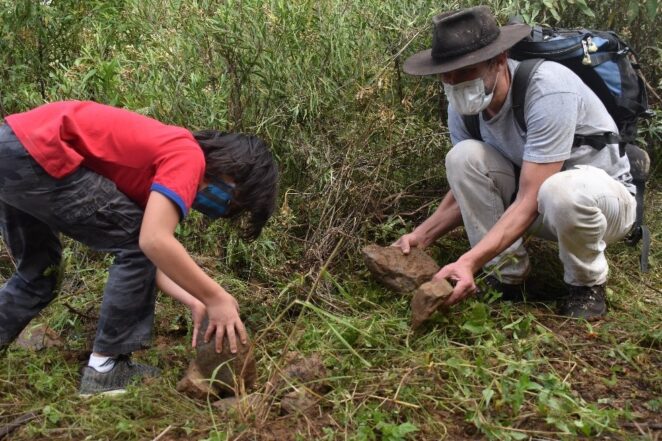
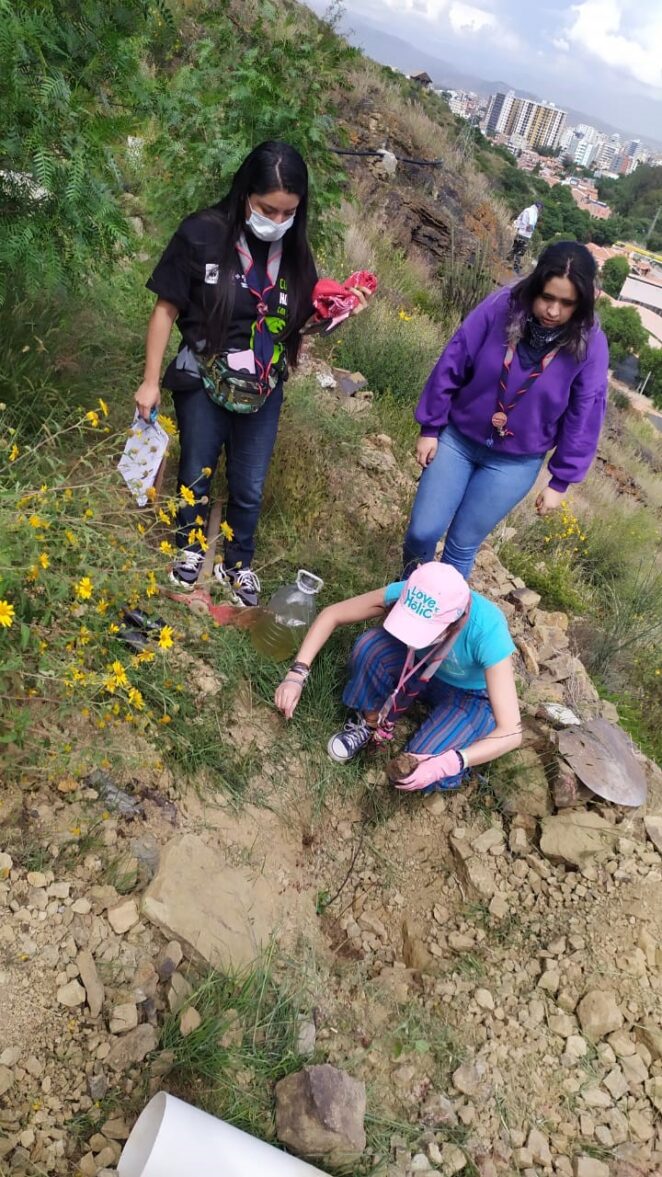
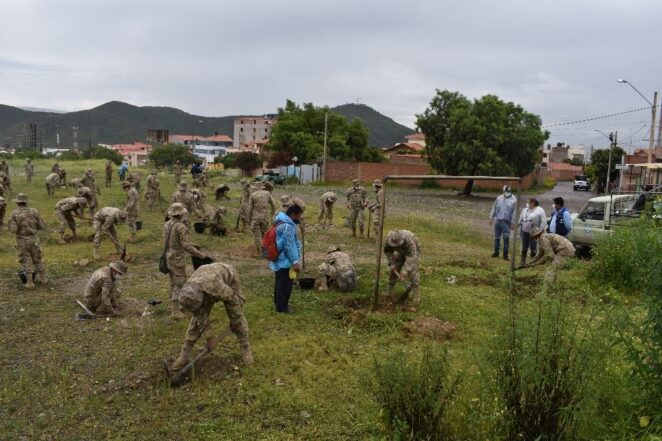
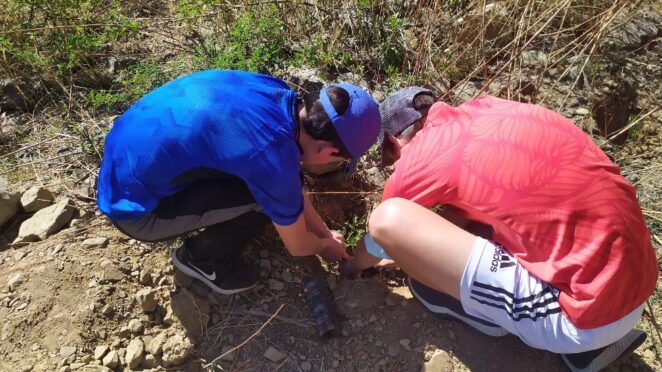
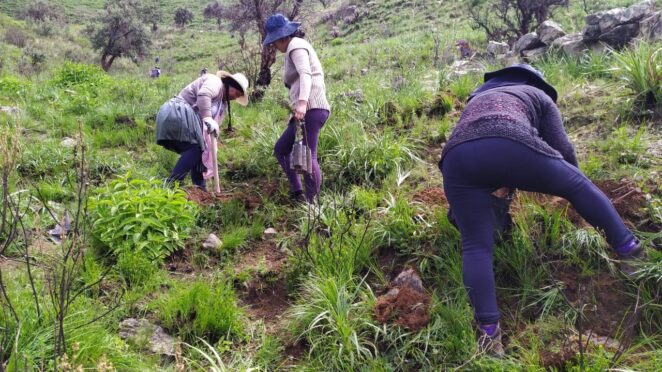
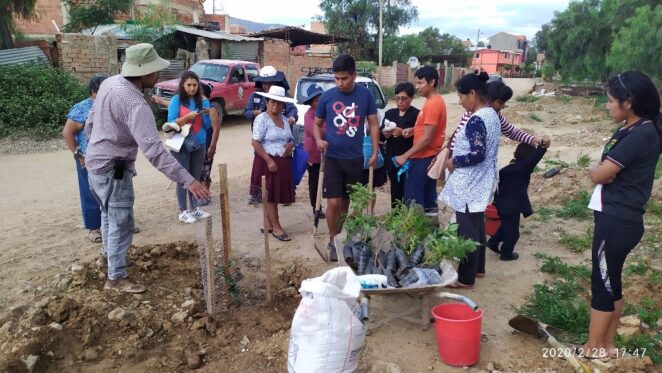


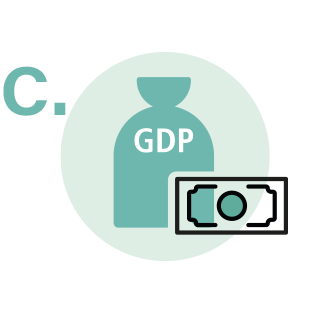







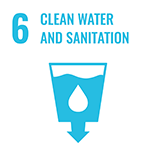
Comments
There is no content